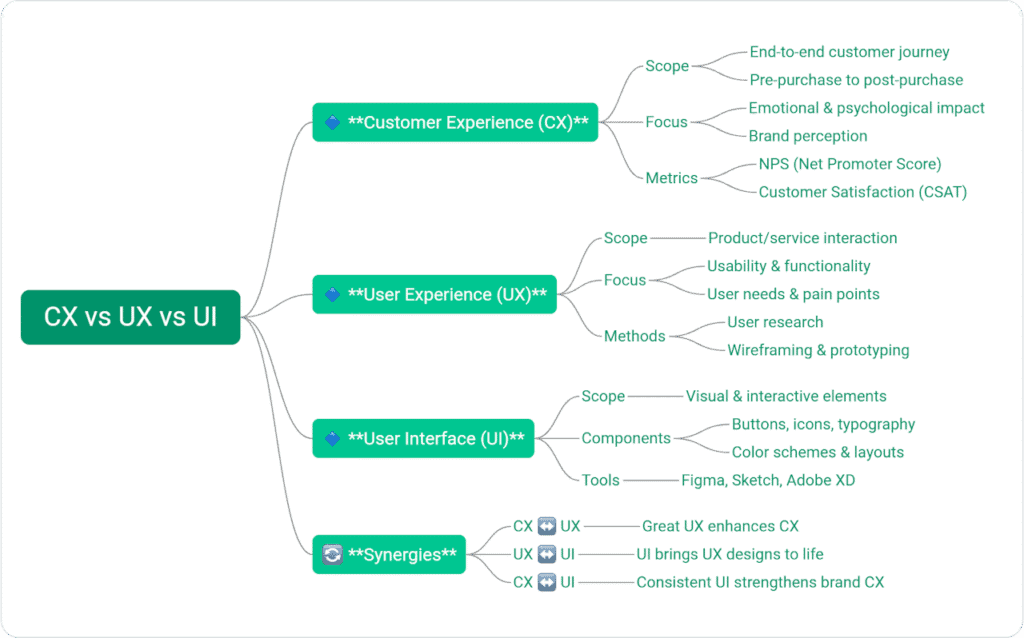Maximizing Siri’s Voice Query Processing Capabilities
Exploring the Mechanism Behind Siri’s Voice Query Processing
Siri operates using a complex architecture designed to effectively manage voice queries, utilizing advanced natural language processing (NLP) techniques to interpret and react to user commands with precision. The interaction begins when a user activates Siri via a voice command or a physical button, which initiates a series of detailed operations that enable Siri to analyze and fulfill the request. The essential stages involved in Siri’s voice query processing include:
- Voice Activation: Initiating the interaction through voice or button.
- Speech Recognition: Advanced algorithms convert spoken language into text format.
- Natural Language Processing: The system evaluates the text to discern user intent and contextual meaning.
- Query Processing: Once the request is understood, Siri retrieves information or carries out the requested action.
- Response Generation: Siri constructs a spoken response tailored to the user’s request.
- Feedback Loop: Continuous user feedback is vital for refining Siri’s accuracy and response quality over time.
A thorough understanding of these stages is crucial for developers and content creators aiming to optimize their materials for voice queries. Each phase presents unique opportunities to enhance user engagement by ensuring that communication is not only effective but also tailored to user needs.
As voice-activated devices proliferate, improving interactions with Siri has become more important than ever. By significantly enhancing the conversational quality of Siri’s responses, user satisfaction can be markedly improved. Utilizing machine learning, Siri can adapt to individual user preferences and diverse communication styles, enriching the overall engagement experience. This transformation allows users to view Siri not just as a tool, but as a companion that genuinely understands their distinct needs.
Despite its advancements, Siri’s voice recognition technology does face certain challenges. Users frequently encounter difficulties related to accents, background noise, and the complexity of their queries. Ongoing improvements in acoustic modeling and algorithmic understanding aim to tackle these issues, yet the subtleties of human speech can still pose difficulties for artificial intelligence systems. Being aware of these limitations empowers users to frame their queries more effectively, increasing the chances of receiving accurate and helpful responses.
Personalization plays a key role in optimizing Siri for individual users. By setting up personalized shortcuts and modifying command preferences, users can substantially enhance their interactions with Siri, making it feel more intuitive and effective. This customization not only improves the user experience but also encourages regular engagement with Siri, seamlessly integrating it into daily routines.
Ultimately, Siri represents a valuable tool for accessibility. For those with mobility challenges or visual impairments, the voice control features of Siri enable interaction with technology in ways that were previously difficult or impossible. This inclusivity ensures that technology is available to a wide audience, aligning with global initiatives aimed at fostering diversity and representation within the tech industry.
Effective Strategies to Enhance User Interactions with Siri
Improving user interactions with Siri revolves around creating experiences that feel engaging and natural. The principles of conversational design are essential in crafting responses that resonate with users, leading to more intuitive interactions. By refining response quality through machine learning, Siri can better comprehend contextual subtleties, resulting in more relevant and useful answers.
To elevate user experiences, content creators should focus on developing responses that imitate natural conversation. This includes incorporating casual language, idiomatic expressions, and humor where appropriate. The objective is to cultivate an interaction that feels human, thereby minimizing the robotic tone that often characterizes voice assistants. Techniques like context-aware responses can alleviate user frustration when queries do not yield expected results.
In addition to conversational quality, the speed of responses is critical. Users expect immediate answers, particularly when utilizing voice commands. This immediacy significantly impacts user satisfaction, encouraging users to engage repeatedly. Streamlining information retrieval processes ensures that users receive timely responses while enhancing the overall interaction quality.
Another significant aspect of optimizing user interactions is the incorporation of user feedback. Actively seeking and analyzing feedback allows developers to pinpoint areas ripe for enhancement. Whether through surveys, usage statistics, or direct comments from users, this feedback loop can guide future updates and refinements, ensuring that Siri remains responsive to user needs.
The importance of machine learning in this context cannot be overstated. As Siri learns from user interactions, it can better anticipate needs and preferences, personalizing responses to suit individual users. This predictive capacity nurtures a more tailored interaction, strengthening the connection between the user and the voice assistant.
Identifying Siri’s Voice Recognition Technology Limitations
While Siri’s voice recognition technology is advanced, it is not without its hurdles. Users often face challenges when interacting with the assistant, particularly in relation to accents, background noise, and the complexity of queries. These factors can significantly hinder Siri’s ability to accurately interpret and respond to commands, often resulting in user frustration.
Accents represent one of the most substantial challenges for voice recognition systems. The diverse range of speech patterns, pronunciations, and dialects found in different regions can create comprehension barriers. Although Siri’s recognition algorithms are consistently improving, users may still experience inaccuracies when making requests with strong accents. This limitation emphasizes the need for clear articulation and the use of standard expressions to enhance recognition.
Background noise poses another significant challenge to Siri’s performance. Environments with elevated ambient noise levels can obstruct the assistant’s ability to discern the user’s voice. Whether in a bustling café or on a busy street, such distractions can lead to misinterpretations. Users are advised to minimize background noise when using Siri for critical tasks to promote clarity and accuracy.
Complex queries can further complicate Siri’s voice recognition capabilities. Users often present multi-part questions or utilize intricate vocabulary, overwhelming the system. Simplifying queries—by breaking them into smaller, more manageable parts—can significantly enhance the likelihood of obtaining accurate answers. For example, instead of asking, “What’s the weather like and should I wear a coat today?” a user might achieve better results by initially asking, “What’s the weather today?” followed by a separate question regarding appropriate clothing.
Despite these limitations, ongoing advancements in artificial intelligence and machine learning are paving the way for improvements. Continuous updates aim to enhance Siri’s understanding of various accents and dialects, while advancements in noise-cancellation technology seek to address challenges posed by background sounds. As these developments progress, users can expect a more robust and effective voice recognition experience.
Enhancing User Experience Through Customizing Siri’s Voice Commands
Customizing Siri’s voice commands enables users to tailor their experience, significantly boosting both efficiency and satisfaction. By personalizing interactions, users can forge a more intuitive relationship with Siri that aligns with their individual preferences and requirements. This level of customization is crucial for driving engagement and enhancing usability.
One effective method for personalizing Siri is through the creation of shortcuts. Siri Shortcuts allow users to set specific commands that trigger tailored actions. For example, a user might establish a shortcut to swiftly access a favorite playlist or set reminders for daily activities. This functionality not only saves time but also enriches the overall user experience by streamlining frequently performed tasks.
Moreover, adjusting Siri’s responses can greatly enhance interaction quality. Users can modify settings to ensure that Siri utilizes preferred terminology or responds in a more casual tone. This flexibility allows users to shape the assistant’s personality to better align with their communication style, making interactions feel more organic and less mechanical.
Users can also manage Siri’s responses based on context. By establishing preferences for how Siri interacts in different scenarios—such as at home versus in professional settings—individuals can create an experience that feels appropriate for each situation. This adaptability is particularly beneficial for users who frequently switch between formal and informal environments.
Additionally, the app ecosystem provides ample opportunities for customization. Numerous third-party applications incorporate Siri integration, allowing users to set unique commands for various tasks. For instance, a user might instruct Siri to send a message through a specific messaging app, reflecting their communication preferences. By utilizing these integrations, users can further enhance the assistant’s capabilities, making it a more versatile tool in their daily lives.
Ultimately, customizing Siri’s commands and responses is about aligning the assistant with the user’s lifestyle and preferences. By dedicating time to tailor the interaction, users can transform Siri from a basic voice assistant into a personalized companion that intuitively understands and anticipates their needs.
The Impact of Siri on Accessibility and Inclusion
Siri plays a pivotal role in enhancing accessibility, significantly empowering individuals with mobility or visual impairments. By providing voice control functionalities, Siri opens up a wide range of technological possibilities for those who may struggle with traditional interfaces. This inclusivity aligns with global movements aimed at promoting equal access to technology for all users, regardless of their abilities.
For individuals facing mobility challenges, Siri serves as an essential tool for navigating devices without the need for physical interaction. Voice commands eliminate the necessity for manual input, enabling users to perform a variety of tasks, such as sending messages, making calls, or setting reminders, using simple spoken commands. This hands-free interaction not only fosters independence but also enriches the user experience, allowing individuals to engage with technology in a way that suits their physical capabilities.
In addition to assisting those with mobility issues, Siri significantly benefits individuals with visual impairments. By utilizing voice commands, users can access information and control their devices without needing to rely on screen-based navigation. Siri’s ability to read text aloud, provide auditory feedback, and assist with various applications enhances the overall accessibility of smartphones and other devices. This functionality is essential for enabling visually impaired users to interact with technology confidently and independently.
Furthermore, Siri’s integration with additional accessibility features amplifies its impact. For example, when combined with VoiceOver, a screen reader designed for Apple devices, users can receive comprehensive assistance in navigating applications. This synergy between voice control and screen reading capabilities creates a seamless experience, allowing users to access information and complete tasks efficiently.
Siri’s role in promoting inclusivity extends beyond individual users; it also influences broader societal perceptions of accessibility. By normalizing voice interaction, Siri helps raise awareness about the importance of designing technology that accommodates diverse user needs. This shift encourages developers and companies to consider accessibility in their product design, fostering a more inclusive tech landscape.
In essence, Siri’s contributions to accessibility represent a significant advancement in making technology available to everyone. By continuing to innovate and expand its capabilities, Siri is poised to play an even more substantial role in bridging the gap between technology and users with disabilities, ensuring that everyone can benefit from the digital age.
Expert Tips for Creating Content Optimized for Siri Voice Queries
Practical Examples of Effective Siri Queries
Effective Siri queries are characterized by their clarity and conciseness, allowing users to interact with the assistant in ways that optimize its capabilities. By articulating questions and commands clearly, users can achieve the desired outcomes swiftly and efficiently. Below are some exemplary effective Siri queries that illustrate best practices for engaging with the voice assistant:
- “Set a reminder for my meeting at 3 PM.” – Direct and specific.
- “What’s the weather like in London today?” – Clear location and query type.
- “Play my workout playlist.” – Straightforward command with a specific action.
- “Send a message to John saying I’m running late.” – Action-oriented with clear intent.
- “How long does it take to drive to the airport?” – Requests specific information.
- “What’s the news today?” – Simple query for general information.
- “Show me photos from last summer.” – Requests specific data type.
- “What time does the store close?” – Clear question regarding hours of operation.
These examples underscore the significance of using straightforward language while avoiding ambiguity. When users clearly articulate their requests, Siri can accurately process and respond, greatly enhancing the overall experience. This principle is especially pertinent in light of the diverse range of users and their varying communication styles.
Another critical factor in crafting effective queries is understanding the context and intent behind the request. For instance, a user seeking directions might say, “Give me directions to the nearest coffee shop.” This command is specific and assumes the user is currently in a location, allowing Siri to provide timely information. Users should consider the context of their requests, as this can significantly affect Siri’s ability to deliver satisfactory responses.
Moreover, users are encouraged to experiment with different phrasings to determine the most effective way to communicate with Siri. If a particular query does not yield the desired result, rephrasing it or breaking it down into simpler components can often lead to better outcomes. This flexibility not only improves interaction efficiency but also fosters a deeper understanding of how to engage with the assistant effectively.
In summary, effective Siri queries rely on clarity, context, and intent. By employing these principles, users can maximize their interactions with Siri, resulting in a more satisfying and productive experience.
Actionable Techniques for Crafting Siri-Friendly Content
Creating content optimized for Siri necessitates an understanding of the subtleties of voice search and adapting content strategies to align with user behavior. By focusing on conversational patterns and user intent, content creators can enhance the likelihood of their material being featured in voice searches. Here are actionable steps to develop Siri-friendly content:
1. Utilize Natural Language: Content should be written in a conversational tone that mimics how people naturally speak. This approach increases the chances of Siri accurately interpreting the content when users pose questions or commands.
2. Focus on User Intent: Understanding what users are likely to ask is crucial. Anticipate common questions related to your content and formulate responses that directly address those inquiries. This proactive approach aligns content with user expectations.
3. Incorporate Long-Tail Keywords: Voice searches tend to be more conversational and longer than traditional keyword-based searches. Integrating long-tail keywords into your content helps capture these unique search patterns and improves visibility in voice queries.
4. Create Structured Content: Well-organized content with clear headings, bullet points, and concise paragraphs facilitates easier navigation via voice commands. Siri can more effectively pull accurate information from structured content, increasing the chances of appearing in voice search results.
5. Test Queries: Regularly testing how Siri interprets your content is vital. Utilize various phrasing and query styles to determine how well Siri understands and responds to your material. This process helps identify areas for improvement and fine-tuning.
6. Prioritize Fast Answers: Users expect quick responses when utilizing voice commands. Ensure that the most critical information is presented at the beginning of your content, allowing Siri to relay it promptly.
7. Leverage FAQs: Including a Frequently Asked Questions (FAQ) section enhances content relevance for voice searches. Users often seek quick answers to specific questions, and an FAQ section can effectively address these needs.
By implementing these steps, content creators can develop Siri-friendly material that not only enhances search visibility but also improves user engagement. The goal is to create a seamless experience that aligns with how users interact with voice technology, ultimately leading to greater satisfaction and increased usage.
Expert Techniques for Optimizing Content for Siri
Experts in content creation and optimization recognize the importance of tailoring content specifically for Siri. As voice search continues to grow, understanding how to effectively optimize material for Siri can enhance visibility and user engagement. Here are strategies recommended by experts for refining content for voice queries:
1. Utilize Long-Tail Keywords: Voice queries tend to be more expansive and conversational, making long-tail keywords essential. By incorporating phrases that reflect how people naturally speak, content becomes more aligned with user expectations.
2. Structure Content for Voice Search: Content should be organized logically, with clear headings and subheadings that facilitate easy navigation. This structure allows Siri to quickly pinpoint relevant information, improving the chances of being featured in search results.
3. Incorporate Question-Based Queries: Framing content around common questions can significantly optimize it for voice search. By directly addressing specific queries, content creators can ensure their material resonates with users seeking immediate answers.
4. Focus on Localization: When relevant, incorporating regional language, slang, and local references can enhance Siri’s ability to deliver accurate responses. This is particularly crucial for businesses targeting local customers or services.
5. Test and Analyze: Regularly testing how Siri interprets content is critical for optimization. By experimenting with different queries and noting Siri’s responses, content creators can refine their material for greater compatibility with voice search.
6. Enhance User Engagement: Creating content that is interactive and engaging can lead to higher user retention. This includes utilizing multimedia elements, such as images and videos, which can complement voice queries and provide a richer experience.
7. Leverage Data Analytics: Analyzing user behavior and interaction data can provide insights into how well content performs with voice search. Metrics such as click-through rates and engagement levels can guide adjustments and improvements.
By implementing these strategies, experts can significantly enhance content visibility in voice search environments. The key lies in understanding user behavior and preferences while continuously adapting content to meet these needs in an ever-evolving digital landscape.
Strategies for Crafting Engaging Content for Siri
Key Components That Make Siri Content Engaging
Creating engaging Siri content is crucial for fostering user satisfaction and encouraging repeat interactions. The key to crafting captivating content lies in its ability to resonate with users on a personal level while delivering accurate and relevant information. Here are some essential elements that contribute to the engagement of Siri content.
First and foremost, content must be concise. Users interacting with Siri typically seek quick answers, and lengthy responses can lead to frustration. By distilling information into succinct statements, content creators ensure that users receive the information they need without unnecessary elaboration. This brevity enhances the user experience, mirroring the fast-paced nature of voice interactions.
Another pivotal aspect is a conversational tone. Content that feels relatable and friendly encourages users to engage more deeply. By employing informal language, idiomatic expressions, and even light humor, content can feel less scripted and more like natural dialogues. This approach fosters a sense of connection between the user and Siri, making interactions feel more personable.
Moreover, the content should directly answer user queries. Understanding common questions users may pose and addressing them in the content is crucial. Providing clear and relevant answers not only boosts user satisfaction but also increases the likelihood of users returning for future interactions. This focus on answering user intent is fundamental in crafting valuable voice content.
Incorporating visual and multimedia elements can further enrich engagement. While Siri is primarily a voice assistant, complementary visuals, such as images or videos, can enhance the content experience. For instance, when users query for recipes, Siri can provide a voice response alongside links to recipe videos or step-by-step photos. This combination of audio and visual information caters to diverse learning styles, fostering a more immersive experience.
Lastly, incorporating <a href="https://limitsofstrategy.com/rent-a-car-online-essential-user-review-insights/">user feedback</a> is vital. Understanding what users find engaging or frustrating can inform content adjustments. By monitoring user interactions and gathering feedback, content creators can continuously refine their approach, ensuring that Siri content remains pertinent and appealing to users.
In summary, creating engaging Siri content revolves around brevity, conversational tone, direct responses, multimedia enhancements, and active user feedback. By focusing on these elements, content creators can significantly enhance user interactions with Siri, fostering lasting engagement and satisfaction.
Techniques for Optimizing Content for Siri Voice Search
Optimizing content for Siri requires a strategic approach that considers the unique nature of voice search. By employing specific techniques, content creators can enhance the visibility and relevance of their material in voice-activated environments. Here are several effective optimization techniques:
1. Utilize Question Formats: Framing content around common questions reflects how users typically engage with Siri. By anticipating user queries and structuring content accordingly, creators can ensure their material is more likely to be featured in voice search results.
2. Provide Quick Answers: Users expect immediate responses when using voice commands. Structuring content to present key information upfront allows Siri to relay answers promptly, catering to user expectations and enhancing satisfaction.
3. Focus on Clarity: Clear and straightforward language is essential for voice recognition. Avoid jargon and complex terminology that may confuse both users and Siri. Instead, opt for simple words and phrases that convey information effectively.
4. Implement Structured Data: Utilizing structured data markup can help search engines better understand content context and relevance. This technical optimization can improve how Siri retrieves information and presents it to users, particularly in search results.
5. Emphasize Local Content: For businesses targeting local customers, optimizing content for local search is critical. Use regional language, references, and location-specific details to enhance Siri’s ability to deliver accurate local responses.
6. Encourage User Interaction: Engaging users through prompts or questions within the content can encourage interaction. By inviting users to ask follow-up questions or seek more information, content can foster a dynamic and engaging experience.
7. Regular Testing and Iteration: Continually testing how Siri interprets and responds to content is vital for optimization. By experimenting with different queries and noting results, creators can refine their material for enhanced accuracy and relevance.
By implementing these techniques, content creators can significantly enhance their material’s performance in voice search environments. The goal is to create content that not only ranks well in search results but also resonates deeply with users, fostering a more engaging interaction with Siri.
Understanding User Intent in Siri Queries
Understanding user intent is fundamental to optimizing content for Siri. User intent refers to the underlying motivation behind a query, and recognizing this can significantly impact how effectively content meets user needs. When crafting Siri content, focusing on user intent helps streamline interactions and enhance satisfaction.
Identifying user intent begins with analyzing the types of questions users typically ask. Are they seeking information, directions, or assistance with tasks? By categorizing queries into different intents—informational, navigational, or transactional—content creators can tailor their responses accordingly. For example, a user asking about the weather is likely looking for specific information, while a query about a restaurant may indicate a desire for directions or reviews.
When content directly addresses user intent, it increases the likelihood of providing satisfactory answers. This alignment not only enhances user experience but also encourages repeated engagement. Users are more likely to return to Siri if their previous interactions led to helpful, relevant outcomes.
Anticipating common questions is another critical aspect of addressing user intent. Content creators should conduct thorough research to identify frequently asked questions related to their topics and ensure that their material addresses these inquiries directly. By doing so, they can position their content as a go-to resource for users seeking information.
Furthermore, understanding user intent informs the creation of conversational content. By framing responses in a way that acknowledges the user’s intent, content becomes more relatable and engaging. This approach fosters a sense of connection between the user and Siri, making interactions feel more natural and less mechanical.
Ultimately, recognizing and responding to user intent is essential for optimizing Siri content. By focusing on what users truly seek to accomplish with their queries, content creators can develop material that resonates deeply, ensuring a more satisfying and productive interaction with Siri.
Best Practices for Testing Siri Content
Regular testing of Siri content is crucial to ensure its accuracy and engagement. By employing best practices in testing, content creators can refine their material to improve Siri’s responses and ultimately enhance user satisfaction. Here are several best practices for testing Siri content:
1. Diverse Query Testing: Utilizing a range of queries during testing is essential. This includes variations in phrasing, complexity, and context. By simulating real user interactions, creators can identify how well Siri understands different types of requests.
2. User Scenario Simulation: Testing content within real-world scenarios can provide valuable insights. By replicating how users may interact with Siri in various contexts—such as at home, in the car, or in busy environments—creators can assess how effectively the content performs under different conditions.
3. Iterative Adjustments: Testing should be an iterative process. Based on the results of initial tests, content creators should make adjustments and retest to continually refine responses. This allows for ongoing improvements that align content with user expectations.
4. Gathering User Feedback: Actively seeking user feedback on Siri interactions can provide critical insights. By understanding what users find helpful or confusing, content creators can make informed adjustments to enhance clarity and relevance.
5. Monitoring Performance Metrics: Analyzing performance metrics, such as response accuracy and user engagement, can inform testing strategies. Monitoring how often users return to seek further information or abandon queries can indicate areas for improvement.
6. Collaboration with Experts: Collaborating with voice search optimization experts can enhance testing strategies. Their insights can offer valuable guidance on best practices and emerging trends in voice content creation.
7. Staying Updated on Siri Updates: Siri’s capabilities and algorithms are continually evolving. Staying informed about updates and enhancements can inform testing practices and ensure content remains relevant and effective.
By adhering to these best practices, content creators can significantly enhance the quality and effectiveness of their Siri content. The goal is to create material that not only answers user queries accurately but also engages and satisfies users, fostering a productive relationship with Siri.
Research-Driven Advantages of Crafting Content for Siri Voice Queries
Insights on Siri’s Impact on Content Creation
Siri’s emergence has transformed the content creation landscape, steering the focus towards more conversational, user-centric approaches that heighten engagement and satisfaction. As voice technology continues to gain traction, content creators have adjusted their strategies to align with the expectations of voice search users. This shift signifies a notable evolution in how content is developed and delivered.
One prominent effect of Siri on content creation is the trend towards conversational language. Content creators have begun to prioritize a tone that mirrors natural speech, moving away from formal and rigid expressions. This change not only resonates better with users but also aligns with how voice search operates. By crafting content that feels relatable and engaging, creators can foster a deeper connection with their audience, leading to increased satisfaction and repeat visits.
Furthermore, the rise of user-focused content has become more pronounced as a direct result of Siri’s influence. Content that directly addresses user intent and common queries is prioritized, ensuring that it aligns with the needs and expectations of users. By anticipating what users seek to discover, content creators can position their material as authoritative resources, fostering trust and engagement.
Another area where Siri has made a notable impact is in the integration of structured content. The need for clarity and organization has driven content creators to implement clear headings, bullet points, and concise paragraphs. This structured approach not only aids user comprehension but also facilitates Siri’s ability to retrieve and relay relevant information efficiently. As a consequence, users are more likely to receive accurate answers to their queries, enhancing their overall experience.
Moreover, the emphasis on testing and optimization has become paramount due to Siri’s rise. Content creators are increasingly adopting a data-driven approach to evaluate how well their material performs in voice search environments. By monitoring user interactions and refining responses based on feedback, creators can continuously enhance the quality and relevance of their content.
In essence, Siri’s impact on content creation is profound, driving a paradigm shift towards conversational language, user-centric approaches, structured content, and a focus on testing and optimization. By adapting to these trends, content creators can position themselves for success in a voice-driven world, ensuring that their material resonates with audiences across the globe.
Understanding Siri’s Influence on Content Consumption Patterns
Siri significantly shapes content consumption patterns by making information more accessible and immediate. As users increasingly turn to voice-activated assistants for information, the way they engage with content has evolved dramatically. This shift has far-reaching implications for content creators and marketers, necessitating adjustments in strategies to cater to the changing landscape.
One of the primary ways Siri influences content consumption is through hands-free access. Users can interact with devices while performing other tasks, such as driving or cooking, allowing for multitasking and increased consumption. This hands-free capability has led to a rise in spontaneous queries, as users can easily seek information without interrupting their activities. Content that is optimized for quick retrieval and immediate answers becomes more valuable in this context, driving engagement and satisfaction.
Furthermore, the immediacy of voice search creates a demand for timely information. Users expect quick responses to their queries, prompting content creators to prioritize current and relevant material. This trend underscores the importance of staying updated on emerging topics and trends, ensuring that content remains pertinent to users’ interests. By delivering timely and accurate information, content creators can capture and maintain user attention in a fast-paced digital landscape.
Siri also influences content consumption through its ability to provide personalized recommendations. As users engage with Siri, the assistant learns from their preferences and behavior, tailoring responses to match individual needs. This personalization fosters a sense of connection between users and the assistant, encouraging them to trust Siri as a reliable source of information. Content that aligns with these personalized recommendations becomes more relevant and engaging, enhancing user experiences.
Moreover, the vocal nature of Siri’s interactions encourages users to engage with content in new ways. Users may shift from traditional reading methods to auditory consumption, opting for podcasts, audiobooks, or other audio formats. This transformation opens up opportunities for content creators to explore diverse formats that cater to auditory learners and users on the go. By diversifying content delivery methods, creators can reach broader audiences and enhance engagement.
In summary, Siri significantly influences content consumption by promoting hands-free access, demanding timely information, fostering personalized experiences, and encouraging new engagement methods. By recognizing these shifts, content creators can develop strategies that align with evolving user behaviors, ensuring their material remains relevant and engaging in a voice-driven world.
Benefits of Optimizing Content for Siri Voice Queries
Optimizing content for Siri voice queries offers numerous advantages that extend beyond improved visibility in search results. As the demand for voice-activated technology continues to grow, adapting content strategies to align with this trend can yield significant benefits for creators and businesses. Below are some key advantages associated with optimizing for Siri:
1. Improved Search Rankings: Content that is optimized for voice search is more likely to rank prominently in search results. This increased visibility can lead to higher click-through rates and greater audience engagement, ultimately driving traffic to websites and resources.
2. Increased User Engagement: By crafting content that resonates with users’ conversational queries, creators can foster a deeper connection with their audience. Engaging content encourages users to return for future interactions, enhancing overall engagement and satisfaction.
3. Enhanced User Experience: Optimized content is designed to provide quick and relevant answers, improving the overall user experience. When users receive accurate responses to their queries, they are more likely to view the interaction positively, leading to increased trust and loyalty.
4. Higher Conversion Rates: For businesses, optimizing for Siri can lead to higher conversion rates. When users can easily access relevant information and receive tailored recommendations, they are more likely to engage in purchasing decisions or other desired actions.
5. Increased Brand Authority: Providing authoritative and accurate information through optimized content helps establish brands as trusted resources. As users turn to Siri for information, businesses that consistently deliver high-quality, relevant material can cultivate a reputation for expertise in their field.
6. Broader Audience Reach: The growing popularity of voice search means that optimizing content for Siri allows creators to tap into a wider audience. By accommodating diverse user behaviors and preferences, businesses can attract users who prefer voice interactions over traditional text-based queries.
7. Future-Proofing Content: As voice technology continues to evolve, adapting content strategies to align with these developments helps future-proof businesses. By staying ahead of trends and optimizing for emerging technologies, creators can ensure their material remains relevant in an ever-changing digital landscape.
In conclusion, the benefits of optimizing for Siri voice queries extend far beyond immediate visibility. By focusing on user experience, engagement, and authority, content creators can leverage the power of voice technology to enhance their presence in the digital space and drive meaningful interactions with their audience.
Boosting SEO through Siri Voice Search Optimization
Optimizing content for Siri voice search can significantly enhance search engine optimization (SEO) efforts, leading to improved visibility, engagement, and user satisfaction. As voice searches become increasingly prevalent, adapting SEO strategies to align with voice query patterns is essential for content creators and marketers. Here are several ways that optimizing for Siri can enhance SEO:
1. Increased Focus on Long-Tail Keywords: Voice searches typically involve longer, conversational phrases compared to traditional text queries. By incorporating long-tail keywords into content, creators can align their material with the natural language users employ when interacting with Siri. This alignment improves the chances of ranking well in voice search results.
2. Higher Click-Through Rates: Optimized content that provides clear and concise answers to users’ questions is more likely to be featured as a direct response from Siri. When users receive immediate, relevant answers, they are more inclined to click through to the source, resulting in higher click-through rates for optimized content.
3. Improved Featured Snippets: Siri often pulls information from featured snippets when responding to voice queries. By structuring content to address common questions succinctly, creators can increase the likelihood of their material being selected as a featured snippet, boosting visibility in search results.
4. Enhanced Local SEO: For businesses, optimizing for Siri can significantly improve local SEO. Users frequently turn to voice search for location-specific queries, and by incorporating regional language and references, businesses can enhance their chances of appearing in local search results. This optimization is particularly crucial for services catering to local customers.
5. Better User Engagement Metrics: Content that is easy to digest and provides immediate answers is likely to result in higher user engagement metrics. When users find what they need quickly, they are more likely to stay on the site longer, reducing bounce rates and enhancing overall SEO performance.
6. Cross-Device Accessibility: As users engage with Siri across various devices, optimizing for voice search ensures that content is accessible and relevant regardless of the platform. This cross-device compatibility enhances user experience, leading to improved SEO outcomes.
7. Adaptability to Changing Search Habits: As voice search continues to grow, optimizing content for Siri helps creators adapt to the changing landscape of search behavior. By staying ahead of trends and adjusting strategies accordingly, businesses can maintain a competitive edge in the digital marketplace.
In summary, enhancing SEO through Siri voice search is a multifaceted endeavor that involves focusing on long-tail keywords, featured snippets, local optimization, and user engagement. By implementing these strategies, content creators can significantly improve their visibility, drive traffic, and foster meaningful interactions with their audience.
Tailoring Content for Siri’s Diverse User Base
Understanding Siri’s user base is crucial for effectively tailoring content. By recognizing the demographics, preferences, and behaviors of Siri users, content creators can develop material that resonates with this audience, enhancing relevance and engagement. Here are several strategies for tailoring content specifically for Siri’s user base:
1. Identify Key Demographics: Understanding the primary demographics of Siri users—such as age, location, and lifestyle—can inform content creation. By tailoring material to resonate with these groups, content creators can enhance engagement and relevance.
2. Focus on Common Use Cases: Identifying common scenarios in which users engage with Siri can guide content development. For example, if users often rely on Siri for cooking-related queries, creating content that addresses popular recipes or cooking tips can increase engagement.
3. Incorporate User-Friendly Language: Tailoring language to suit the preferences of Siri users is essential. Using simple, relatable language allows content to be easily understood and engaged with, particularly among diverse audiences with varying communication styles.
4. Address User Needs and Pain Points: Understanding the specific needs and challenges faced by Siri users can inform content creation. By addressing these pain points directly—such as providing solutions to common queries or offering helpful tips—content becomes more relevant and engaging.
5. Utilize Personalization: Leveraging data and insights about user preferences can lead to more personalized content experiences. By tailoring responses based on user behavior and interests, content creators can enhance engagement and satisfaction.
6. Stay Updated on Trends: Keeping abreast of emerging trends and technologies that impact Siri’s user base can inform content strategies. Understanding shifts in user behavior and preferences ensures that content remains relevant and engaging over time.
7. Encourage Community Engagement: Creating opportunities for users to interact with content—such as commenting or sharing experiences—can foster a sense of community among Siri users. This engagement enhances user satisfaction and can lead to increased loyalty.
In conclusion, tailoring content for Siri’s user base requires a deep understanding of demographics, use cases, language preferences, and user needs. By implementing these strategies, content creators can develop material that resonates with Siri users, enhancing relevance and fostering meaningful interactions.
Best Practices for Crafting Siri Voice Query Content
Essential Best Practices for Developing Effective Siri Content
Creating effective Siri content requires adherence to best practices that optimize visibility and enhance user engagement. By implementing these strategies, content creators can ensure their material resonates with users and responds effectively to voice queries. Here are some key best practices for Siri content creation:
1. Use Natural Language: Content should be crafted in a conversational tone that mirrors how users typically speak. Avoid jargon and complex phrases, opting instead for simple, relatable language that enhances understanding and engagement.
2. Prioritize User Intent: Understanding user intent is crucial for content creation. Anticipate the types of questions users may ask and structure responses that directly address those queries, increasing the likelihood of providing helpful answers.
3. Implement Structured Formatting: Organizing content with clear headings, bullet points, and concise paragraphs enhances readability and allows Siri to retrieve information quickly. This structured approach improves the chances of being featured in voice search results.
4. Encourage Quick Answers: Users expect prompt responses when using voice commands. Ensure that key information is presented upfront, allowing users to receive accurate answers without unnecessary delays.
5. Leverage FAQs: Integrating a Frequently Asked Questions (FAQ) section can significantly enhance content relevance for voice searches. Users often seek quick answers to common questions, and an FAQ section can effectively address these needs.
6. Test and Iterate: Regularly testing how Siri interprets content is vital for optimization. Use diverse query variations and gather user feedback to refine material continuously, ensuring it remains effective and relevant.
7. Stay Informed About Updates: Siri’s capabilities and algorithms are continually evolving. Keeping abreast of updates and enhancements can inform content strategies, ensuring material remains aligned with current best practices.
By following these best practices, content creators can develop Siri-friendly material that enhances visibility, improves user engagement, and fosters positive interactions with the voice assistant. The ultimate goal is to create content that resonates with users and meets their needs effectively.
Structuring Content for Siri’s Voice Search
Structuring content for Siri’s voice search is critical for ensuring that users receive accurate and relevant responses to their queries. An effective structure not only enhances readability but also improves Siri’s ability to retrieve pertinent information quickly. Here are essential strategies for structuring content for Siri’s voice search:
1. Clear Headings and Subheadings: Use descriptive headings and subheadings to organize content logically. This structure helps users navigate the material easily and allows Siri to pinpoint relevant sections when responding to voice queries.
2. Concise Paragraphs: Break content into short, digestible paragraphs. Each paragraph should focus on a single idea or concept to enhance clarity and allow users to absorb information quickly.
3. Bullet Points and Lists: Incorporating bullet points or lists enhances the scannability of content. Presenting information in list format allows users to quickly identify key points, while also aiding Siri in retrieving specific data when asked about particular topics.
4. Direct Answers: Position critical information at the beginning of the content to facilitate quick access. When users pose questions, they are often looking for immediate answers, and presenting key points upfront enhances the likelihood of satisfying those inquiries.
5. Use of Natural Language: Structure content in a way that mirrors natural speech patterns. This alignment with conversational language increases the chances of Siri accurately interpreting and delivering relevant information.
6. Include Relevant Keywords: Naturally integrate long-tail keywords and phrases that reflect common voice queries into the content. This enhances search visibility and aligns material with the way users typically communicate with Siri.
7. Optimize for Local Queries: For businesses, including local references and keywords is essential. This optimization ensures that Siri can provide accurate information to users seeking local services, ultimately improving visibility.
By implementing these strategies, content creators can effectively structure their material for Siri’s voice search, increasing the likelihood of accurate responses and enhancing user satisfaction. The goal is to create content that is not only informative but also easily accessible and engaging for users.
The Importance of Testing Siri Queries
Testing Siri queries is a fundamental practice that enables content creators to ensure their material is accurately interpreted by the voice assistant. Regular testing helps identify areas for improvement, optimizes content for better performance, and ultimately enhances user experience. Here are several reasons why testing Siri queries is essential:
1. Accuracy of Responses: Testing helps determine how accurately Siri interprets and responds to content. By simulating various queries, creators can identify if Siri retrieves the correct information, allowing for adjustments where necessary.
2. User Experience Enhancement: Regular testing can reveal potential user pain points or frustrations when interacting with Siri. By understanding how users engage with content, creators can refine material to enhance overall satisfaction and ease of use.
3. Adaptation to User Behavior: User behavior and preferences can change over time. Ongoing testing allows content creators to stay updated on how users interact with Siri, enabling them to adapt and optimize their content accordingly.
4. Identification of Common Queries: Through testing, creators can discern popular or frequently asked queries. This insight can inform content development, allowing creators to address common questions proactively and improve relevance.
5. Iterative Improvements: Testing should be an iterative process. Regularly assessing how well Siri understands and responds to content allows for continuous improvements and refinements, ensuring that material remains effective and engaging.
6. Collaboration with Real Users: Engaging with actual users during testing can provide valuable insights. Gathering feedback on how well users feel their queries are understood by Siri can inform adjustments and enhance overall effectiveness.
7. Staying Current with Siri Updates: As Siri’s algorithms and capabilities evolve, regular testing ensures that content remains aligned with the latest updates. This diligence enhances the likelihood of maintaining visibility and relevance in voice search results.
In summary, testing Siri queries is a critical practice that enables content creators to ensure accuracy, enhance user experience, adapt to evolving behaviors, and continuously improve the quality of their material. By prioritizing testing, creators can produce content that resonates with users and meets their needs effectively.
Optimizing Content for Localized Queries with Siri
Optimizing content for localized queries is essential for enhancing Siri’s ability to deliver accurate and relevant responses to users in specific geographic locations. As voice search becomes increasingly prevalent, tailoring content to cater to local audiences can significantly improve user engagement and satisfaction. Here are several strategies for optimizing Siri content for localized queries:
1. Incorporate Regional Language: Use language and phrases that reflect the local dialect, slang, or expressions. This approach not only resonates with users but also increases the chances of Siri accurately interpreting and responding to queries.
2. Include Local References: Integrating local landmarks, businesses, or cultural references within the content enhances relevance for users searching for specific information. Content that reflects local context is more likely to engage users and satisfy their queries.
3. Use Location-Specific Keywords: Including geographic keywords in content is vital for local optimization. For example, instead of using general terms, incorporate specific city names or regional identifiers that users are likely to include in their queries.
4. Highlight Local Offers or Events: If applicable, feature local promotions, events, or services in the content. This addition enhances relevance and encourages users to engage with the content based on their immediate interests and needs.
5. Create Location-Specific Content: Developing content tailored to particular localities ensures that users have access to information that is timely and pertinent. For example, creating guides for local attractions or services can drive engagement from users searching within their geographic area.
6. Optimize for Local Listings: Ensuring that business listings are up-to-date and accurately reflect location information is critical. This optimization allows Siri to provide accurate responses to users seeking local services, ultimately improving visibility.
7. Utilize Structured Data Markup: Implementing structured data markup can improve how search engines understand the context of local content. This technical enhancement helps Siri retrieve and relay relevant information when users pose local queries.
By implementing these strategies, content creators can effectively optimize their material for localized queries, significantly enhancing Siri’s ability to deliver accurate and relevant responses to users. The goal is to create content that resonates deeply with local audiences and meets their specific needs, ultimately driving engagement and satisfaction.
Future Trends in Siri Voice Query Content
Emerging Trends Shaping Siri Content
As artificial intelligence and voice technology continue to advance, several emerging trends are shaping the future of Siri content. Understanding these trends is crucial for content creators and businesses aiming to remain relevant in a rapidly evolving digital landscape. Here are some key trends currently influencing Siri content:
1. Increased Use of AI for Natural Conversations: Advances in AI are driving the development of more natural and fluid conversations with Siri. As voice recognition technology improves, users can expect a more intuitive dialogue that mimics human interactions, enhancing user engagement.
2. Integration with Smart Home Devices: Siri’s integration with smart home technology is set to expand, enabling users to control multiple devices seamlessly. This trend will encourage the creation of content that provides valuable insights into how to utilize Siri with various smart home applications.
3. Enhanced Personalization Based on User Data: As Siri gathers more data about user preferences and behaviors, content will increasingly be tailored to reflect individual needs. This personalization will enhance user experiences by providing relevant recommendations and information based on past interactions.
4. Focus on Multimodal Interactions: The future of Siri content is likely to embrace multimodal interactions, combining voice, visual, and tactile inputs. This trend will encourage content creators to develop engaging experiences that leverage various formats to enhance user understanding and engagement.
5. Expansion of Localized Content: With the growing significance of local searches, future trends will emphasize the importance of developing localized content. This includes incorporating regional language, references, and context to cater to users seeking information relevant to their specific locations.
6. Voice Commerce Growth: As voice-activated technology becomes more integrated into shopping experiences, content will need to reflect this trend. Businesses will increasingly focus on creating content that facilitates easy purchasing decisions through voice commands.
7. Companion Experiences with Siri: The concept of Siri as a companion will continue to evolve, with content designed to reflect a deeper understanding of user needs and preferences. This trend will enhance user engagement and foster a sense of connection between users and the assistant.
In summary, the future of Siri content will be characterized by increased AI capabilities, smart home integration, enhanced personalization, multimodal interactions, localized content focus, voice commerce growth, and the development of companion experiences. By recognizing and adapting to these trends, content creators can ensure their material remains relevant and engaging in an ever-evolving digital landscape.
Projecting Siri’s Evolution in the Coming Years
The future of Siri promises significant evolution, driven by advancements in artificial intelligence, user preferences, and technological innovations. As Siri continues to adapt and expand its capabilities, users can expect a more intuitive and proactive voice assistant experience. Here are several ways Siri is projected to evolve:
1. Greater Intuitiveness: Future versions of Siri are expected to become increasingly intuitive, anticipating user needs and preferences. By leveraging machine learning, Siri will learn from past interactions and adjust responses accordingly, creating a more personalized experience.
2. Proactive Suggestions: Siri is expected to evolve into a more proactive assistant, offering suggestions and recommendations based on user behavior. For example, if a user regularly asks about traffic conditions before leaving for work, Siri might automatically provide updates without needing to be prompted.
3. Enhanced Contextual Awareness: Future improvements will likely focus on Siri’s ability to understand context better. This includes recognizing conversation nuances, such as previous queries or user emotions, allowing for more meaningful interactions and responses.
4. Integration with Augmented Reality (AR): As AR technology advances, Siri may become integrated with AR applications, providing users with interactive experiences. This integration could enable users to receive information about their surroundings through voice commands, enhancing engagement and utility.
5. Seamless Multi-Device Functionality: Siri’s integration across multiple platforms and devices is expected to improve, allowing for seamless transitions between smartphones, tablets, and smart home devices. This evolution will enable users to maintain consistent interactions regardless of the device in use.
6. Support for More Languages and Dialects: As Siri continues to expand its global reach, support for additional languages and dialects will enhance accessibility and usability for diverse user demographics. This expansion will enable a broader audience to engage with the assistant in their preferred language.
7. Focus on Privacy and Security: As users become more aware of privacy concerns, future iterations of Siri will likely emphasize user security and data protection. Enhancements in encryption and user control over data will foster greater trust and confidence in voice technology.
In conclusion, Siri is poised to evolve significantly, becoming more intuitive, proactive, and contextually aware. Integrating advancements in AR, enhancing multi-device functionality, expanding language support, and prioritizing privacy will shape the future of Siri interactions. By embracing these changes, users can anticipate a more enriching and engaging experience with their voice assistant.
Preparing Content for Future Siri Developments
Preparing content for future Siri developments requires a forward-thinking approach that anticipates changing user behaviors and technological advancements. As voice technology continues to evolve, content creators must adapt their strategies to align with emerging trends and user expectations. Here are several strategies for effectively preparing content for future Siri developments:
1. Stay Informed About Technological Advancements: Keeping abreast of the latest developments in AI and voice technology is crucial for anticipating changes in user behavior. Regularly engaging with industry news, reports, and updates will help content creators remain relevant and informed.
2. Embrace Multimodal Content: As Siri evolves towards multimodal interactions, content should be developed with this in mind. Integrating visual, auditory, and interactive elements can enhance user engagement and provide a more enriching experience.
3. Focus on Personalization: Anticipating the need for personalized content based on user data allows creators to deliver tailored experiences. By leveraging insights into user behavior and preferences, content can become increasingly relevant and engaging.
4. Incorporate Localization Strategies: As the emphasis on local content grows, creators should implement strategies that enhance regional relevance. This includes using local dialects, references, and context to cater to diverse user demographics.
5. Prepare for Voice Commerce: As voice-activated shopping becomes more prevalent, content should be developed to facilitate easy purchasing decisions. Creating informative, persuasive content that aligns with voice commerce trends will position businesses for success.
6. Foster User Engagement: Encouraging user interaction with content through prompts or questions can create a dynamic experience. Engaged users are more likely to return for future interactions, enhancing brand loyalty.
7. Test and Adapt Continuously: Regularly testing content and gathering user feedback is vital for ongoing optimization. This iterative approach ensures that content remains relevant and effective, adapting to evolving user behaviors.
By implementing these strategies, content creators can effectively prepare their material for future Siri developments. The goal is to create content that resonates with users, enhances engagement, and remains relevant in an ever-changing digital landscape.
Frequently Asked Questions about Siri Voice Queries
What is Siri and how does it work?
Siri is Apple’s virtual assistant that employs voice recognition technology to understand and respond to user queries. It processes voice commands through natural language processing, performing tasks such as sending messages, setting reminders, and providing information.
How can I optimize my content for Siri voice queries?
To optimize content for Siri, use natural language, focus on user intent, incorporate long-tail keywords, and structure information clearly with headings and concise paragraphs.
What are effective examples of Siri voice queries?
Effective Siri queries include commands like “Set a reminder for 5 PM,” “What’s the weather in Paris?”, and “Play my jazz playlist.” These queries are clear, concise, and actionable.
Why is user intent important in Siri queries?
Understanding user intent is crucial as it helps tailor content to meet specific user needs. Aligning content with user intent increases the likelihood of providing relevant and satisfactory answers.
How does Siri enhance accessibility for users?
Siri enhances accessibility by allowing voice control for individuals with mobility or visual impairments. It enables tasks like sending messages and controlling devices through simple voice commands.
What are the limitations of Siri’s voice recognition?
Siri’s voice recognition can struggle with accents, background noise, and complex queries. Continuous improvements aim to overcome these challenges, but limitations still exist.
How can I personalize my experience with Siri?
Users can personalize their experience with Siri by setting up shortcuts, custom commands, and adjusting Siri’s response tone to better match their preferences.
What future trends should I be aware of for Siri content?
Emerging trends include increased AI capabilities for natural conversations, integration with smart home devices, enhanced personalization, and a focus on voice commerce.
What are the benefits of optimizing for Siri voice queries?
Optimizing for Siri can improve search rankings, increase user engagement, enhance user experience, and boost conversion rates by providing timely and relevant information.
How can I test the effectiveness of my Siri content?
Testing can be conducted by simulating various user queries, gathering feedback, and monitoring performance metrics to identify areas for improvement and ensure accuracy in responses.
The post Create Content for Siri Voice Queries: A Universal Guide appeared first on Ezi Gold.

































